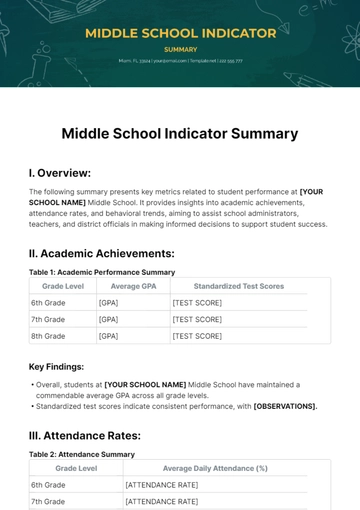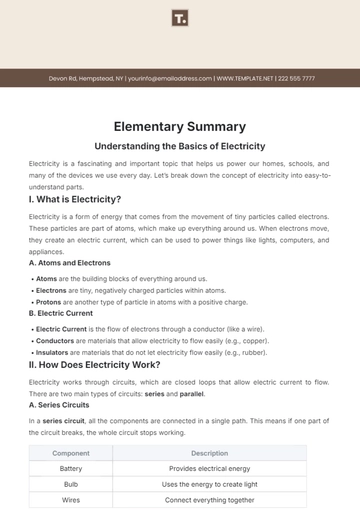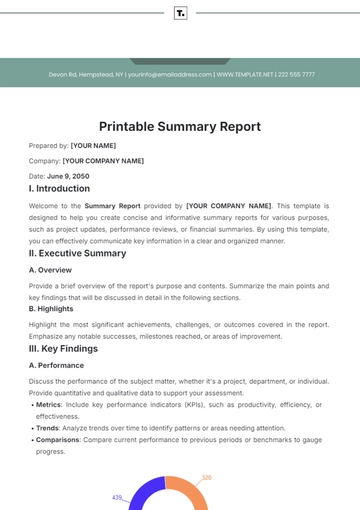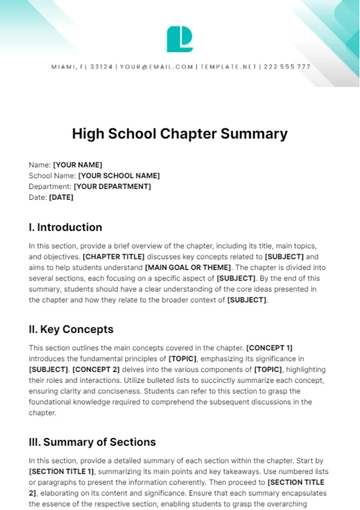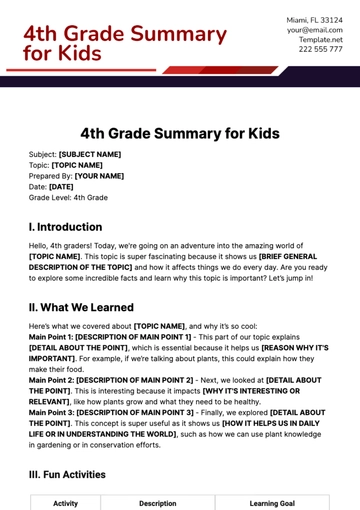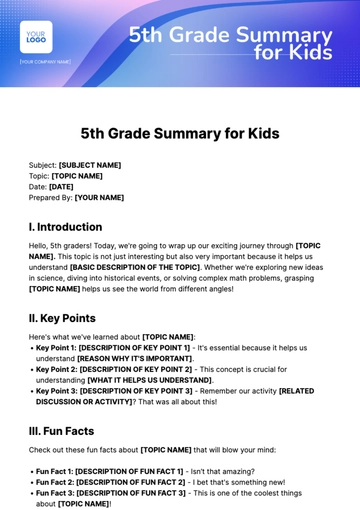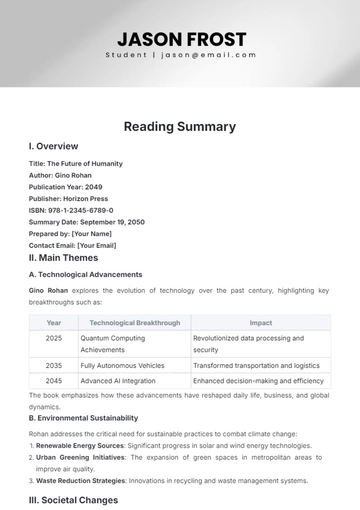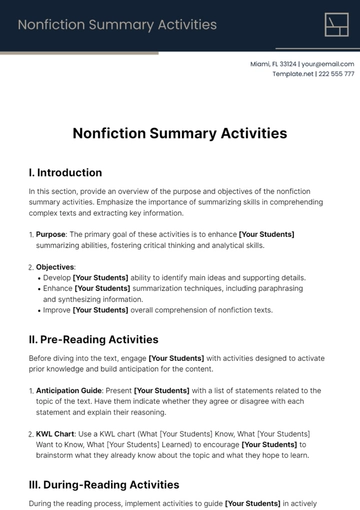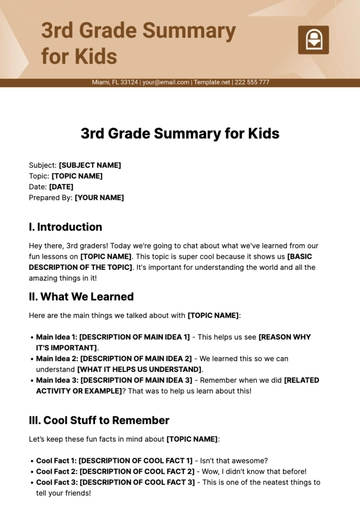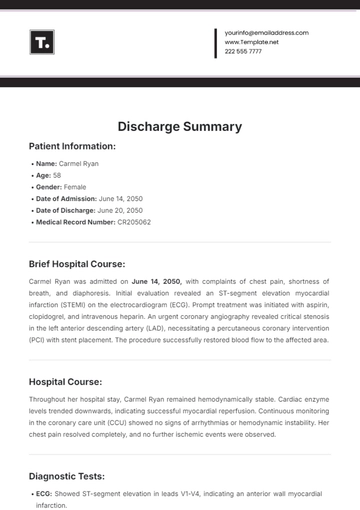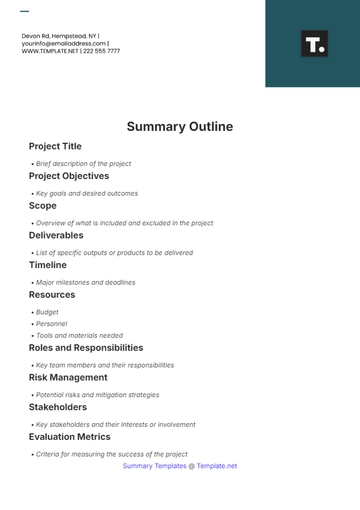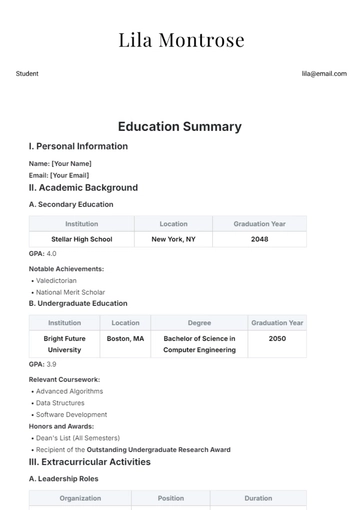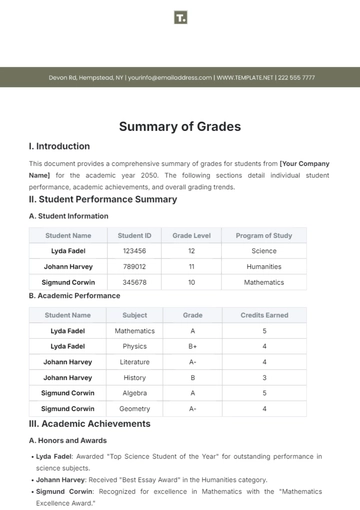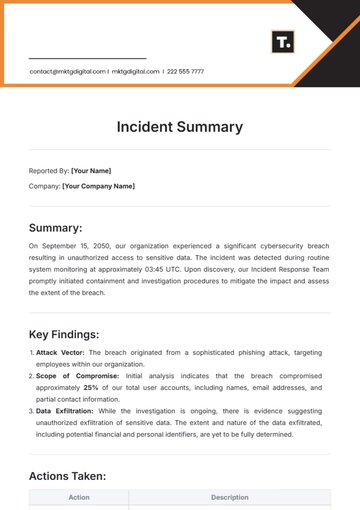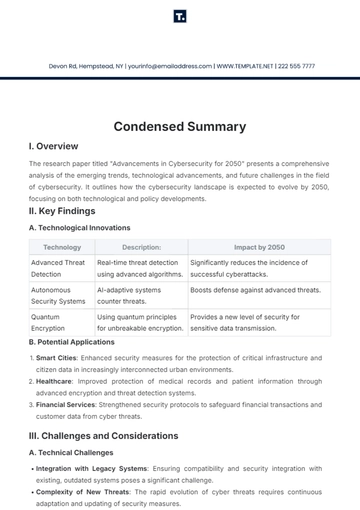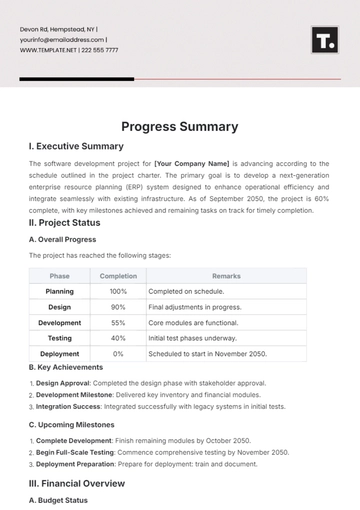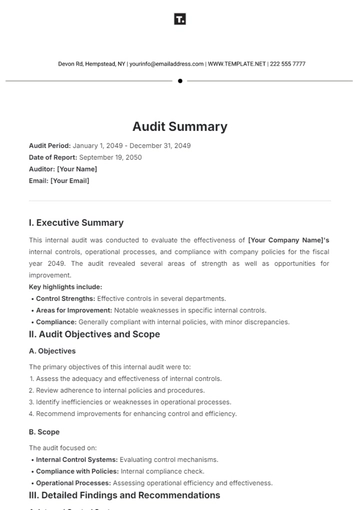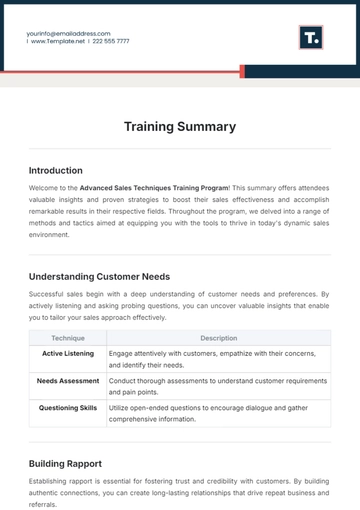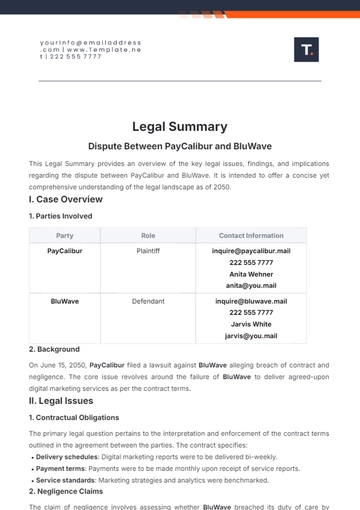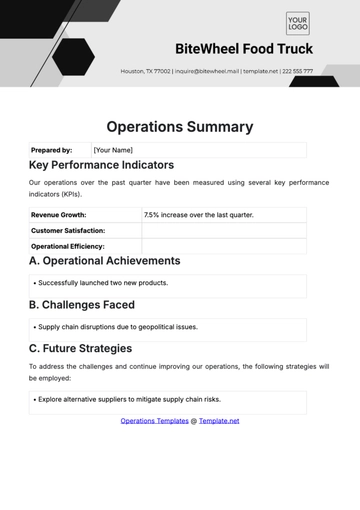Law Student Case Brief Summary
I. Case Information
Summary
In [CASE TITLE], the plaintiff, [PLAINTIFF'S NAME], filed a lawsuit against the defendant, [DEFENDANT'S NAME], alleging breach of contract and fraud. The case centered around a real estate transaction gone awry, where [PLAINTIFF'S NAME] claimed that [DEFENDANT'S NAME] misrepresented the condition of the property he sold. The court was tasked with determining whether [DEFENDANT'S NAME] was liable for breach of contract and fraud, and if so, the appropriate remedies.
II. Facts
[PLAINTIFF'S NAME] entered into a contract to purchase a residential property from [DEFENDANT'S NAME].
[DEFENDANT'S NAME] assured [PLAINTIFF'S NAME] that the property was in excellent condition and free from defects.
After the sale, [PLAINTIFF'S NAME] discovered numerous undisclosed defects in the property, including plumbing issues and structural damage.
[PLAINTIFF'S NAME] incurred significant expenses in repairing the defects and sought to recover damages from [DEFENDANT'S NAME].
III. Issues Presented
IV. Arguments
A. Plaintiff's Arguments
[DEFENDANT'S NAME] made material misrepresentations regarding the condition of the property, constituting a breach of contract.
[PLAINTIFF'S NAME] cites Section 10 of the contract, which requires full disclosure of any known defects.
Case law precedent supports the principle that sellers have a duty to disclose material defects.
B. Defendant's Arguments
[DEFENDANT'S NAME] did not intentionally misrepresent the condition of the property.
V. Legal Principles
The principle of caveat emptor (buyer beware) applies in real estate transactions, but sellers have a duty to disclose material defects.
Fraud requires a showing of intentional misrepresentation, materiality, reliance, and damages.
VI. Court's Decision
The court found in favor of the plaintiff, [PLAINTIFF'S NAME], on both the breach of contract and fraud claims.
[DEFENDANT'S NAME] was held liable for breaching the contract by failing to disclose material defects in the property.
Additionally, the court determined that [DEFENDANT'S NAME]'s actions amounted to fraudulent misrepresentation, entitling [PLAINTIFF'S NAME] to additional damages.
VII. Analysis
The court's decision reaffirms the importance of full disclosure in real estate transactions.
Sellers have a duty to disclose material defects, and failure to do so can result in liability for breach of contract and fraud.
This case underscores the need for buyers to conduct thorough due diligence before purchasing property and seek legal recourse for misrepresentations.
VIII. Conclusion
[CASE TITLE] serves as a cautionary tale for sellers in real estate transactions, highlighting the legal consequences of failing to disclose material defects.
The decision reinforces the rights of buyers to seek remedies for breach of contract and fraud when they are misled by sellers.
Moving forward, parties involved in real estate transactions should prioritize transparency and honesty to avoid litigation and preserve the integrity of the market.
Case Brief Templates @ Template.net

